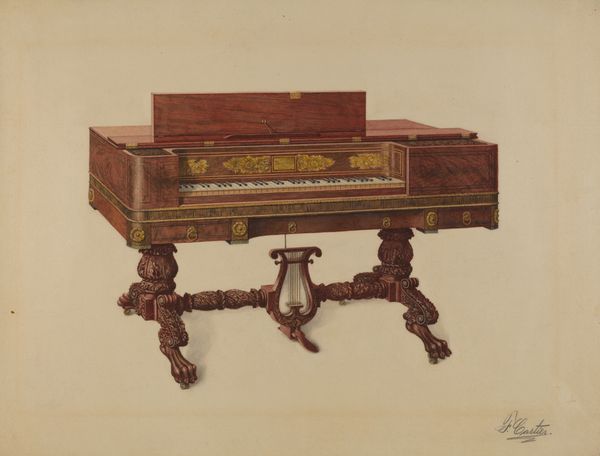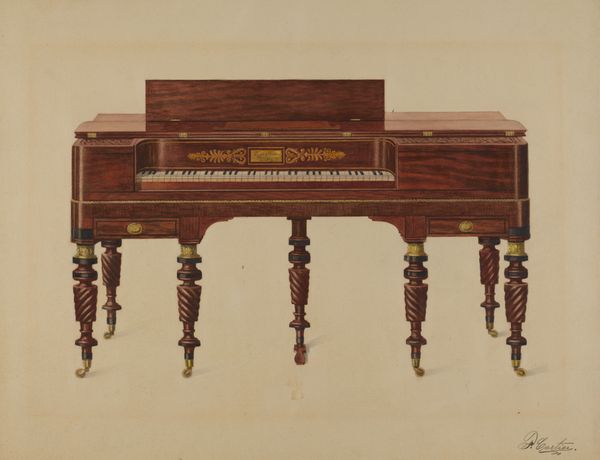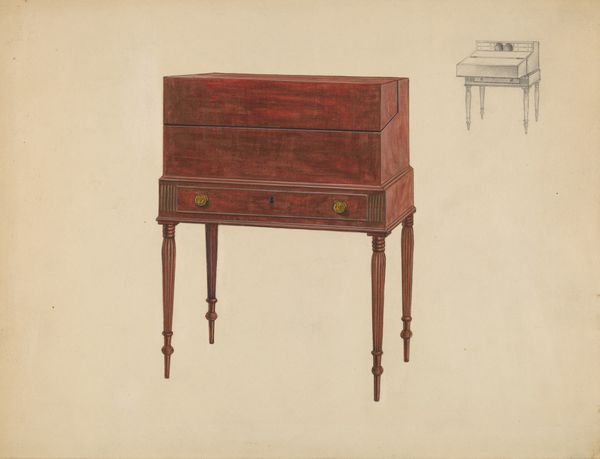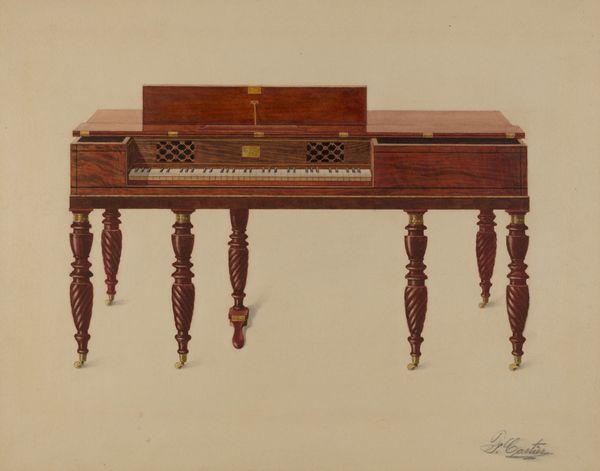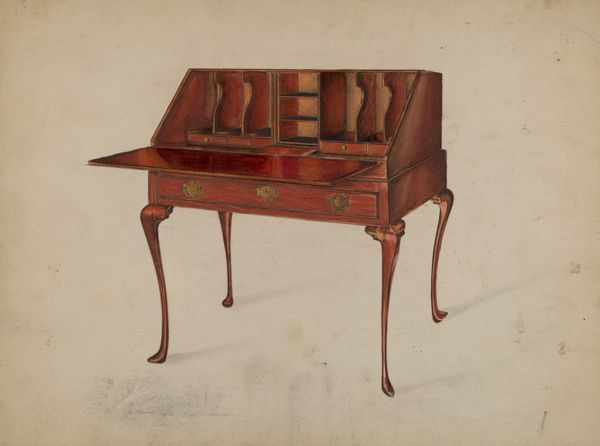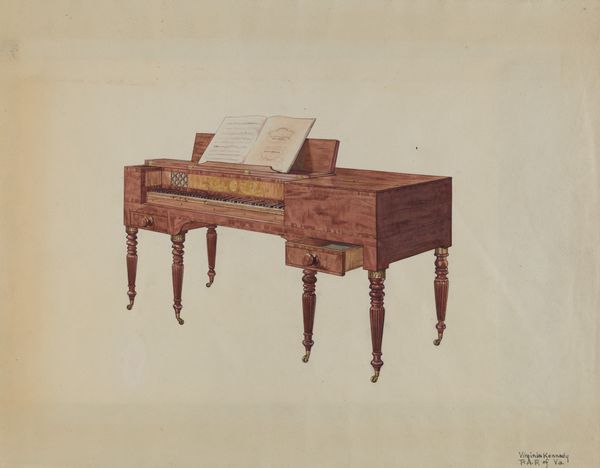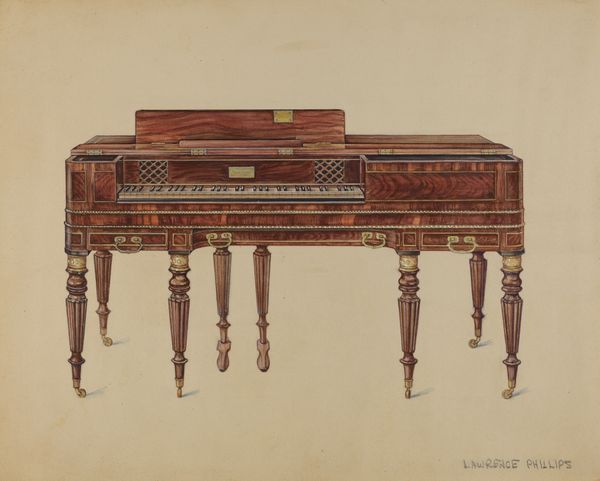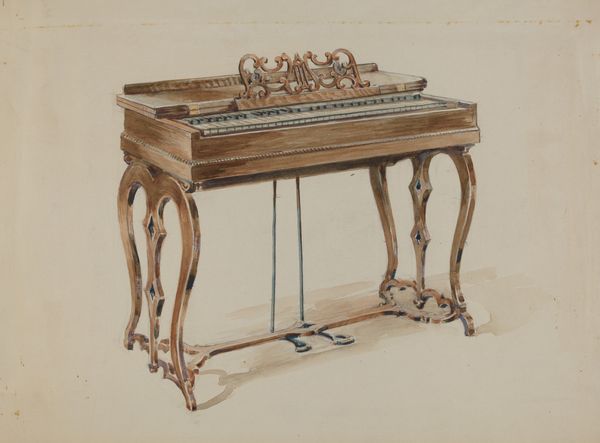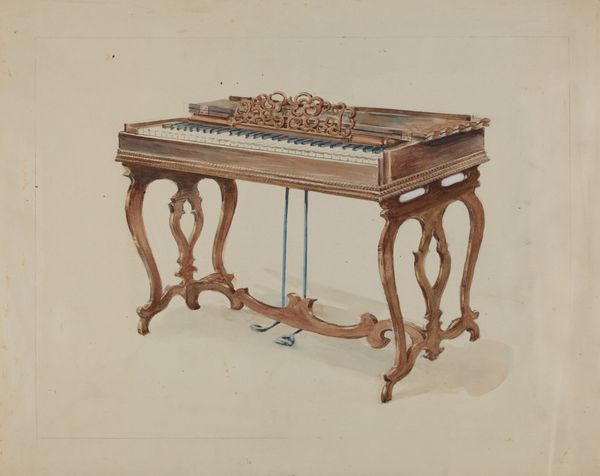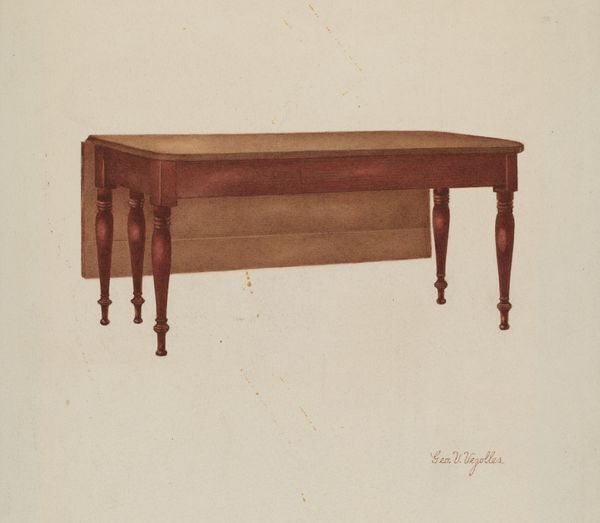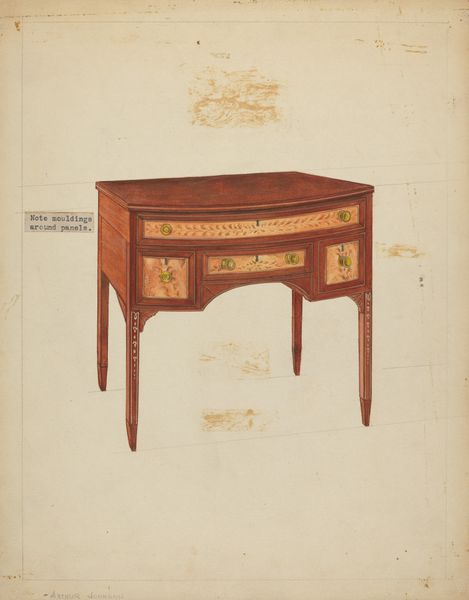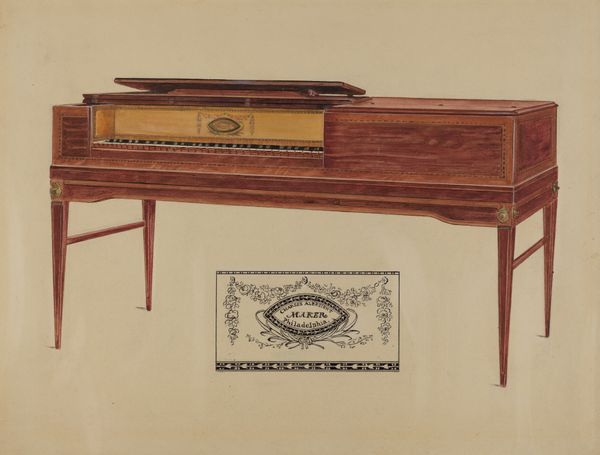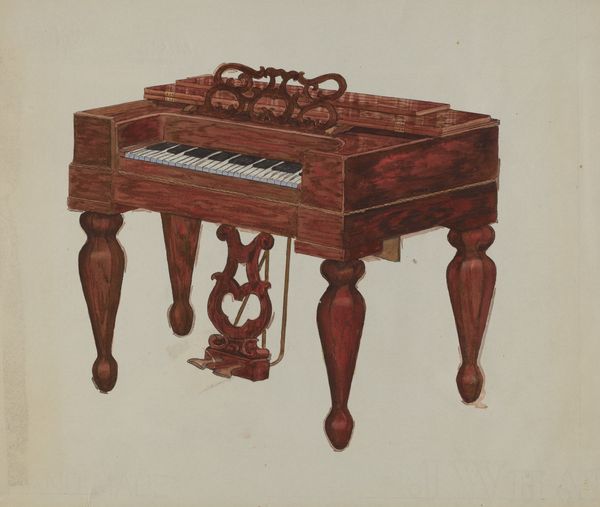
drawing, coloured-pencil, watercolor
#
drawing
#
coloured-pencil
#
water colours
#
watercolor
#
coloured pencil
#
academic-art
Dimensions: overall: 22.9 x 28.9 cm (9 x 11 3/8 in.)
Copyright: National Gallery of Art: CC0 1.0
Curator: This colored pencil drawing from around 1936 is entitled "Piano Forte" by Ferdinand Cartier. What are your initial impressions? Editor: I’m struck by the sheer formality. The crisp lines, the meticulous rendering of the wood grain—it exudes a sense of bourgeois order, almost suffocating in its precision. Curator: Indeed. Cartier's representation can be considered an objective, rather cold visual record—yet, by the 1930s the piano had become heavily symbolic within the black community in particular. They were purchased by many, partly to signal integration, upward mobility, and perhaps challenge prevalent racist ideologies concerning black people’s capabilities. The presence of a piano in the home could become a subversive act. Editor: I see your point. Formally speaking though, there's a distinct rigidity, even architectural quality to it. The way the legs are delineated, those columnar shapes feel as if the weight of a cultural ideal or value is literally on it! The composition with its very static structure—it does evoke status but also, possibly constraint. Curator: Right, it speaks to the complexities of societal expectations during that period. A "piano forte" means literally “soft-loud,” and pianos afforded both volume and variety. Purchasing musical instruments empowered historically marginalized peoples by providing the creative, cultural and economic opportunities previously withheld from them. In essence, the artwork can be analyzed as more than a beautiful drawing: rather, a symbolic tool of emancipation. Editor: I appreciate you articulating the historical backdrop to this artwork—now it's less "Piano Forte", and more "Piano... Potent." Curator: Exactly. And perhaps its creation, or depiction, by Cartier contributes to that broader cultural dialogue surrounding race and identity. It shows just how loaded a seemingly neutral piece of furniture can become! Editor: Thinking about it that way gives "Piano Forte" a surprising depth, almost like the silence before a disruptive melody. Curator: A silence fraught with meaning and waiting for a new voice, one might say!
Comments
No comments
Be the first to comment and join the conversation on the ultimate creative platform.
